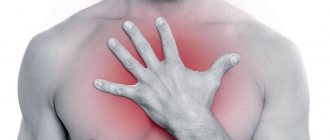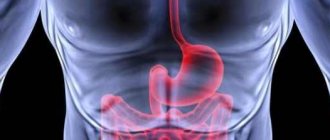Common heart pathologies in children and adolescents
Heart diseases are congenital or acquired. Disorders of the first type are detected even before the child is born, and acquired diseases are diagnosed at almost any age.
Common pathologies include:
- Cardiac arrhythmia. If the anomaly occurs, the rhythm of the heart muscle is disrupted, contraction and relaxation occur untimely. Pathology often occurs in childhood against the background of hormonal changes and increased stress on the nervous system. Sometimes arrhythmia develops in completely healthy children. Its short-term and mild manifestations indicate that the disorder is not pathological in nature.
- VSD. It is a set of symptomatic manifestations, including disorders of the heart. The pathology occurs against the background of autonomic dysfunction of the cardiovascular system. Often the disease is secondary, that is, it occurs against the background of other ailments. Currently, VSD is the cause of cardiac dysfunction in approximately 25% of cases.
- Congenital defects. There are many types of defects that occur during fetal development. Deviations are not always malignant in nature, but under the influence of certain factors, often occurring in adolescence, they cause anatomical changes in the organ, which leads to the development of a pronounced clinical picture.
- Valve prolapse. The heart muscle is responsible for pumping blood and is therefore a hollow organ. There are valves inside that allow blood to move in the right direction. One of the common teenage pathologies is dysfunction of the valve that separates the left atrium from the ventricle. The disease is accompanied by severe symptoms, including chest pain, arrhythmia, fainting, and a feeling of lack of oxygen.
Such pathologies, in addition to many pronounced symptoms, can cause changes in the anatomical shape of the heart. One type of pathology is drip heart syndrome. In most cases, this change is natural and is not dangerous to health.
What is the configuration of the heart, its indicators are normal
The configuration of the heart is the shape, contours, showing the expansion or contraction of the atria, ventricles, and vascular bundle. It includes the borders (upper, left and right), waist (narrowing at the junction of the bundle of blood vessels to the left ventricle), angles between the diaphragm (reflecting the inclination of the axis) and the arcs of the chambers of the heart. If the configuration is normal, this means that they correspond to the parameters (see table) of healthy people:
- relative dullness of the heart (its actual size) in the chest and absolute (the part that is not covered by the lungs and is directly adjacent to the ribs);
- length (length) and width (diameter);
- waist (retraction of the contour, narrowing of the diameter);
- there are angles between arcs.
| Contour type and main parameters | How was she educated? | Upper | Left | Right |
| Relative Dullness | Real contours | Bottom of 3rd ribs on the left edge of the sternum | The fifth intercostal space is 1.5 cm to the right from the conditional line drawn from the middle of the left clavicle | The fourth intercostal space is 1 cm to the right from the edge of the sternum |
| Absolute | Right ventricle | Bottom of 4th ribs on the left edge of the sternum | 2.5-3.2 cm to the right of the line from the middle of the left clavicle | Fourth intercostal space along the left edge of the sternum |
| Width of the bundle of large vessels (vascular) | Aorta, pulmonary artery, veins | The space between the 2nd and 3rd ribs does not extend beyond the borders of the sternum (approximately 4.5-5.5 cm) | ||
| Right contour (arcs) | Superior vena cava, right atrium | The edge of the sternum to the 3rd rib and the third or fourth space between the ribs 1 cm to the right | ||
| Right atriovasal angle | Between the superior vena cava and the atrium | 3-4 intercostal space | ||
| Cardio-phrenic angle right | Diaphragm, right atrium | 5th intercostal space | ||
| Left contour (arches) near the left edge of the sternum | Aorta | 1st intercostal space | ||
| Pulmonary artery | 2nd intercostal space | |||
| Left atrium | Level 3 ribs | |||
| Left ventricle | Inferior to the 3rd rib, just behind the left atrial appendage | |||
| Waist | Bundle of blood vessels, left ventricle (left), right atrium (right) | Level 3 ribs | ||
| Length | Heart length | From the apex to the right cardiophrenic angle the length should be between 11.5-12.7 cm | ||
| Diameter | Width of relative cardiac dullness | From the right border to the midline and from the left (the most protruding part) to the middle, normally 11-13 cm | ||
If the patient has diseases of the heart and/or large vessels, especially valve defects, then the load on its parts changes. Then the atria and ventricles enlarge, which is manifested by a shift in the boundaries of relative and absolute dullness, changes in size, smoothing of angles, and disappearance of the waist.
Determination of heart configuration by percussion
To determine the configuration of the heart, you first need to find the boundaries of dullness. They are so named because they can be examined during a medical examination. To do this, use the percussion (tapping) method. Above the lungs, the sound is clear, since they are filled with air, and as soon as the finger reaches the contour of the heart, dullness appears (relative dullness), and then a completely dull sound (absolute).
First, the true border of the heart is found in the chest. To do this, the finger of the left hand moves from the outside to the center. Since the organ’s entire surface is not adjacent to the chest, part of it is covered by the lungs, and a small area remains open, when tapping it can be identified by a dull (dull) sound. This zone (absolute dullness) reflects the size of the right ventricle. It is found by moving from the center to the edges.
When the boundaries of cardiac dullness change
An increase in the relative dullness of the heart is a ghost of expansion of its cavities (ventricles and atria). Occurs with valve defects, high blood pressure, weakening of the heart muscle or its hypertension (thickening). The absolute dullness of the heart can also change normally - for example, with bloating or pregnancy, the diaphragm rises upward and brings the heart closer to the ribs.
Expansion may be affected by:
- compaction of lung tissue (pneumosclerosis);
- adhesions in the chest;
- dilatation of the right ventricle.
Emphysema (increased airiness), an asthma attack, a low position of the diaphragm with weakness of the respiratory muscles can reduce the area.
X-ray configuration
If the boundaries of dullness (relative and absolute) can be found only by tapping, then measurements of length, width, finding the waist, angles and arcs of the configuration occur only on a chest x-ray. In the conclusion, the radiologist indicates the conformity of the configuration to a certain type and measures the angles, length and diameter.
It is important to understand that X-ray diagnostics will only show an expansion of the heart shadow or its displacement, an unusual shape, but to determine the cause, an ultrasound (echocardiography) will often be required. Only the latter method will help to study the movement of blood through the valves, the contractility of the heart muscle and its thickness.
Expert opinion
Alena Ariko
Expert in Cardiology
An atypical configuration of the heart is not always a sign of illness. For example, young women may have a cardiac shadow shape that is close to the mitral shadow, while older overweight patients may have an aortic shadow shape. Therefore, a diagnosis is never made based on X-ray findings alone.
Types of heart configuration
The following types of heart configurations have been identified:
- normal - the right angle between the vascular bundle is approximately in the middle, the second and third arches are almost equal (2 cm each);
- aortic – the waist is rarely emphasized;
- mitral - expansion mainly to the left, partially to the right, no waist;
- close to geometric figures: trapezoid, ball, triangle;
- “bullish” with a significant increase in all cameras.
Provoking factors
In childhood and adolescence, the body is affected by many factors that can cause disturbances in the functioning of the cardiovascular system. According to cardiologists, the main reason for the occurrence of drip heart syndrome is that growth processes are activated in a teenager. At the same time, the increase in internal organs does not always occur proportionally, which is why deformation may develop.
The main provoking factors include:
- Hereditary predisposition.
- Complications of pregnancy and childbirth.
- Intoxication of the mother's body during pregnancy.
- Presence of chronic diseases.
- Birth injuries.
- Infection in the fetus.
Such factors often provoke congenital diseases. However, many CVS pathologies arise due to bad habits or improper lifestyle, that is, they are acquired.
Possible reasons include:
- Low physical activity.
- Reduced immunity, sensitivity to infections.
- Diseases accompanied by high blood pressure.
- Cholesterol abuse.
- Overweight.
- Hormonal teenage changes.
- Stress loads.
- Psychological trauma and emotional stress.
Often, teenage drip heart syndrome occurs in children with an asthenic body type. Although they are tall, such people are thin, their limbs are elongated, and their shoulders are narrow. It is believed that such a complexion leads to a droplet-type change in the shape of the heart.
Waist Heart
The cardiac waist is the junction of the vascular bundle (arteries and veins entering and exiting the heart) into the left ventricle. Its apex is the left atrium, so when it enlarges, the waist disappears. With the expansion of the left ventricle, the waist will be well defined, “emphasized”.
Diameter of the heart
To measure the diameter of the heart, the midline of the body is visually determined, and from it the distances to the right and left edges of the relative dullness of the heart are measured. In a healthy person of average build, the right size does not exceed 4 cm, and the left - 9 cm; for thin people, a decrease of 1 cm is allowed.
The right diameter is larger than normal when:
- expansion of the right chambers (atrium and/or ventricle);
- accumulation of fluid in the pericardial sac (exudative pericarditis);
- displacement of the heart shadow to the right due to the large left ventricle.
The left size increases with diseases of the left chambers of the heart, less often it is shifted by the dilated right ventricle.
Normal dimensions of the vascular bundle
The vascular bundle is formed by the aorta or superior vena cava on the right and the pulmonary artery on the left; its size normally does not exceed 5-6 cm. It is covered by the sternum and does not protrude beyond its edges. If its width is greater, then this may be a sign of an aortic aneurysm or atherosclerosis.
Right heart contour
The right contour of the heart includes only 2 arches. The first is the superior vena cava or the ascending aorta (they are very close), and the second is always represented by the right atrium. Between these arches there is an angle called the right atriovasal.
Its location determines the configuration of the heart:
- normally it is approximately in the middle (between equal arcs);
- with mitral it is displaced upward;
- with aortic it moves down;
- with trapezoidal, triangular, spherical it disappears.
Left outline
The left contour includes the arcs:
- the first is part of the descending aorta;
- the second is the pulmonary artery;
- third - left atrium;
- the fourth is the left ventricle.
With a mitral configuration, they are all present, but shifted to the left. With aortic, the first and second arches, as well as the third and fourth, merge, the angle (left atriovasal) between the second and third is sharply expressed. If the patient has a trapezoid or a ball, then there is only the first arch, the angle, and the other three are connected into one large line .
Symptomatic manifestations
In order to detect pathology in time and prevent the development of complications, it is necessary to pay attention to the symptoms that arise from cardiac dysfunction. You should listen to the child’s complaints, take into account his general condition and well-being.
With the development of cardiac pathologies, the following symptoms may appear:
- Increased heart rate.
- Pallor of the skin in certain areas.
- The presence of edema of unknown etiology.
- The appearance of shortness of breath.
- Pain in the heart when doing physical exercise.
- Blood pressure surges.
- Arrhythmic phenomena.
Pathologies arising from neurological disorders are often accompanied by feelings of anxiety and fear in the child. Systematic mood swings and the development of short-term depression are noted.
Age-related diseases may manifest themselves irregularly. The greatest intensity of symptoms is observed during puberty, when the load on the body increases significantly. The teenager complains of headaches, weakness, and decreased ability to work.
Droplet heart syndrome, like other cardiovascular disorders, can be asymptomatic, but is more often accompanied by severe symptoms.
Methods for assessing the volume and shape of the heart
During a radiographic examination of the intercostal space, cardiac volume is calculated using three lines on a lateral and anterior view of the heart. However, this technique allows us to obtain only approximate indicators with an error of up to 15 percent.
Today, assessment of cardiac volumes is often carried out using ECHO-CG. The appearance of changes in any of the chambers of the heart is characterized by its own characteristics. With an enlargement of the left ventricle during radiography of the intercostal space in the foreground, the length of the axis of this part of the heart increases, characterized by obtuse angles. The upper part of the border of the ventricle of the heart is lowered and rounded, and it often extends beyond the border of the clavicles.
In the lateral view, the posterior contour of the ventricle is shifted toward the posterior part of the esophagus. During the use of functional radiation research methods, confirmation of diseases of the left ventricle is due to a decrease in its parameters. The most accurate indicators of ventricular volume can be obtained by MRI.
Due to the increase in the size of the left atrium, the convexity and lengthening of the contour of the third cardiac arch on the left side becomes noticeable. With a significant increase in this part of the heart, the left atrium will encroach on the right border of the right atrium in the intercostal space. This pathology is called double circuit syndrome. Another extra arch may be formed by the left atrium.
Attention! An enlarged left atrium in lateral view on a radiograph shows its deviation towards the posterior part of the esophagus. A curved line with a small radius - less than 6 centimeters and a small border, indicates mitral stenosis. If the radius of the bend and the bluntness of its angle are greater, this indicates the presence of mitral regurgitation.
Diagnostics
Diagnostic testing is recommended even if there are no cardiac or vascular symptoms. This is especially true for teenagers who play sports, that is, they face increased stress on the body.
Diagnostic stages:
- Taking anamnesis from a child. The patient is questioned about cases of fainting, pain in the sternum or hypochondrium. Symptoms such as fatigue and high blood pressure are taken into account. The child’s parents are also interviewed.
- Inspection. Involves listening with a stethoscope, measuring blood pressure, determining heart sounds, and identifying murmurs. Carpal vessels are palpated to check the pulse. Body type is taken into account.
- ECG. A hardware procedure aimed at recording the electrical activity of the heart. If abnormal, ECG results indicate the presence of pathology.
- Echocardiography allows you to identify hidden problems, including congenital defects, and determine the shape of the heart.
If there are no signs of the disease, diagnosis is performed every 2 years.










